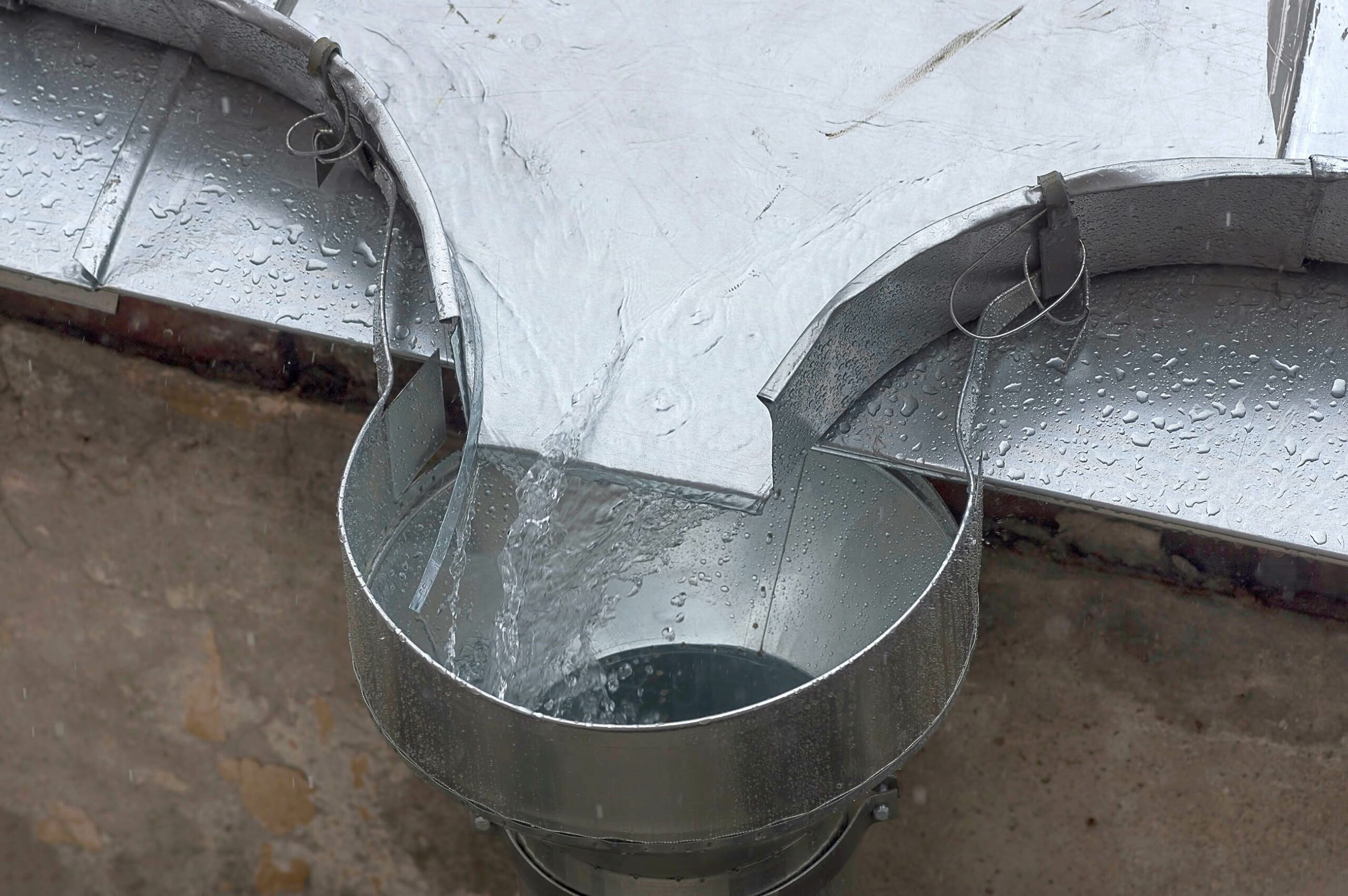Are Your Roof Drains Doing Their Job?
Here’s what you may not know about those roof drains over your head.
Most commercial and industrial buildings have flat roofs, which offer several advantages over the pitched roofs common in residential homes. But flat roofs also have certain disadvantages. And proper attention is necessary to avoid the serious problems that can result.
The main enemy of flat roofs is the water that can build up and cause damage—not just to the roof, but to the structures below. Flat roofs typically incorporate drainage systems to prevent this from happening. But the drainage systems themselves require regular maintenance to stay effective.
To really understand the importance of these drainage systems, it will help to clear up one misconception: flat roofs aren’t really flat. They typically have a slight pitch of one to ten degrees, so they’re more accurately referred to as low-slope roofs. The pitch causes water to flow toward one edge and, hopefully, off the side. But that doesn’t always happen. And that’s when problems can arise.
It becomes imperative, then, to get the water off the roof as quickly and efficiently as possible. Here are three devices that make that happen:
As with so many things, the best remedy is prevention.
Three Roof Drainage Methods
1. GUTTERS
The gutters on a commercial building are similar to those on many residential homes. Their main function is to channel water that falls from the roof away from doorways and windows. But they’re usually located at the roof edge, so they don’t address the problem of water buildup on the roof itself. And as many homeowners know, gutters and downspouts often get clogged with leaves, dirt and other debris, rendering them ineffective. So, it’s important to inspect and clean them regularly.

2. SCUPPERS
Flat roofs often have side walls, or parapets, which prevent water from draining off the edges. One solution for this problem is to install scuppers—openings in the parapet that allow water to escape over the edge.(This feature is familiar to anyone who’s been on a boat or ship, where water on the decks is a constant nuisance. Scuppers in the gunwales of a vessel allow water to drain off efficiently.) A scupper may be connected to a gutter or downspout. Otherwise, the spout should simply extend well beyond the roof edge to direct water away from the structure. This approach avoids the maintenance hassles associated with gutters and downspouts, as scuppers themselves don’t accumulate debris as readily. But scuppers should still be inspected regularly and cleared as needed.

3. INNER DRAINAGE SYSTEMS
Flat roofs often incorporate inner drains located near the roof center or at other locations where water might accumulate. These systems channel water down through the roof into the building interior, where it can then be discharged. A large building might have several of these installed. Since the water descends into the insulated building interior, the risk of freezing and subsequent damage is virtually eliminated. Inner drains require strainers at the top to keep debris from falling into them. But the strainers themselves often get clogged with leaves, branches, dirt or other material. So, it’s essential to inspect these systems and clean them periodically.

What Happens When Water Accumulates
Even with these systems in place, water can still be a problem for flat roofs. Besides clogged drains, the roof itself may become damaged from weather, fallen tree limbs or human traffic. And there may be low spots in the roof where water collects. When water ponds on a flat rooftop, a number of things can occur—all of them bad. If the roof surface is damaged, water can penetrate into cracks and fissures, affecting the material below. Wood beams can rot; waterlogged ceilings can sag and fail; wet insulation becomes ineffective; and electrical wiring can become downright dangerous. Moisture also promotes mold growth, which can cause a raft of health problems.
Flat roofs contain flashing around parapets, air conditioning units and other installed equipment. If water reaches the flashing edges or into exposed seams, it can cause the same damage described above.
Water weighs a lot, so when it accumulates, it exerts pressure on the surfaces below it. That can cause the material to buckle and fail. And when water freezes, the expansion can likewise damage the material around it.
Water damage can be especially insidious because it often goes unnoticed. Meanwhile, it’s doing its destructive work, day after day, year after year. And water may travel horizontally before it inflicts its harm, so locating the source of a breach can be maddeningly difficult.
For all these reasons, it pays to be proactive and stop the damage before it occurs. Inspecting the roof and its drainage systems twice a year is a small inconvenience compared to the potential cost of water damage. And professionals can take care of the process, sparing you the hassle and eliminating the risks.
That makes good sense—whatever the size or type of building.



